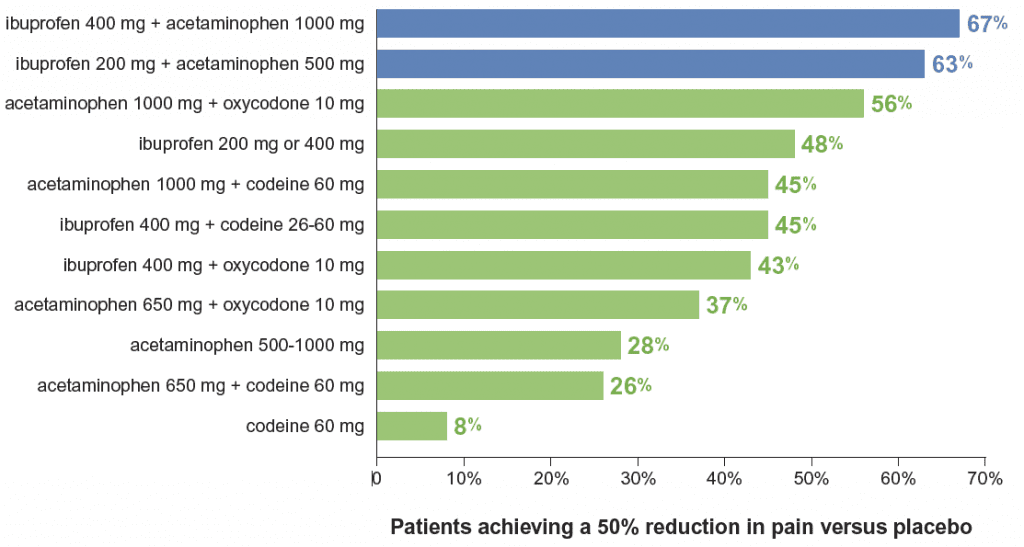Evidence-based Clinical Guidelines for Pain Management in Dentistry
Published Materials
Dentists have made strides in reducing opioid prescriptions to patients. But dentists remain a top prescriber of opioids to children and young adults.1 Many of these patients have their first exposure to opioids via these dental prescriptions, leading to increased risk of opioid related harms.2
The goal of our educational program is to educate dentists and dental hygienists on effective treatment of acute dental pain, the use of evidence-based treatment options for the management of acute dental pain, and to encourage the implementation of risk mitigation strategies for opioid prescribing.
Preventing opioid exposure
Filling an opioid prescription from a dentist may increase the risk of persistent use three-fold.3 Add to that, fewer than half of dental opioid prescriptions are consumed.4 Excess opioids in the home increase family risks of overdose.5 Yet opioid pain medications are less effective than other over-the-counter options.
Ibuprofen and acetaminophen: the most effective options6

Patient satisfaction is similar for both non-opioid pain regimens and opioid pain regimens after third molar extractions.7
Establishing a protocol for managing pain after a procedure may reduce the reliance on opioid medications.8 If an opioid medication is needed, checking the prescription drug monitoring program (PDMP), educating patients about opioid risks, limiting quantities prescribed, discussing safe storage and disposal of unneeded opioids, talking about naloxone, and coordinating with other clinicians if the patient is at risk for misuse can help reduce risk of overdose to the patient and family members.
Resources for Providers
Information current at time of publication, April 2022.
The content of this website is educational in nature and includes general recommendations only; specific clinical decisions should only be made by a treating clinician based on the individual patient’s clinical condition.
References
- Chua KP, et al. Opioid prescribing patterns by dental procedure among US publicly and privately insured patients, 2013 through 2018. J Am Dent Assoc. 2021;152(4):309-317.
- Chua KP, et al. Opioid Prescribing to US Children and Young Adults in 2019. Pediatrics. 2021;148(3).
- Chua KP, et al. Persistent Opioid Use Associated With Dental Opioid Prescriptions Among Publicly and Privately Insured US Patients, 2014 to 2018. JAMA Netw Open. 2021;4(4):e216464.
- Maughan BC, et al. Unused opioid analgesics and drug disposal following outpatient dental surgery: A randomized controlled trial. Drug Alcohol Depend. 2016;168:328-334.
- Chua KP, et al. Dental Opioid Prescriptions and Overdose Risk in Patients and Their Families. Am J Prev Med. 2021;61(2):165-173.
- Moore PA, et al. Benefits and harms associated with analgesic medications used in the management of acute dental pain: An overview of systematic reviews. J Am Dent Assoc. 2018;149(4):256-265.e253.
- Nalliah RP, et al. Association of Opioid Use With Pain and Satisfaction After Dental Extraction. JAMA Netw Open. 2020;3(3):e200901.
- Tompach PC, et al. Investigation of an Opioid Prescribing Protocol After Third Molar Extraction Procedures. J Oral Maxillofac Surg. 2019;77(4):705-714.